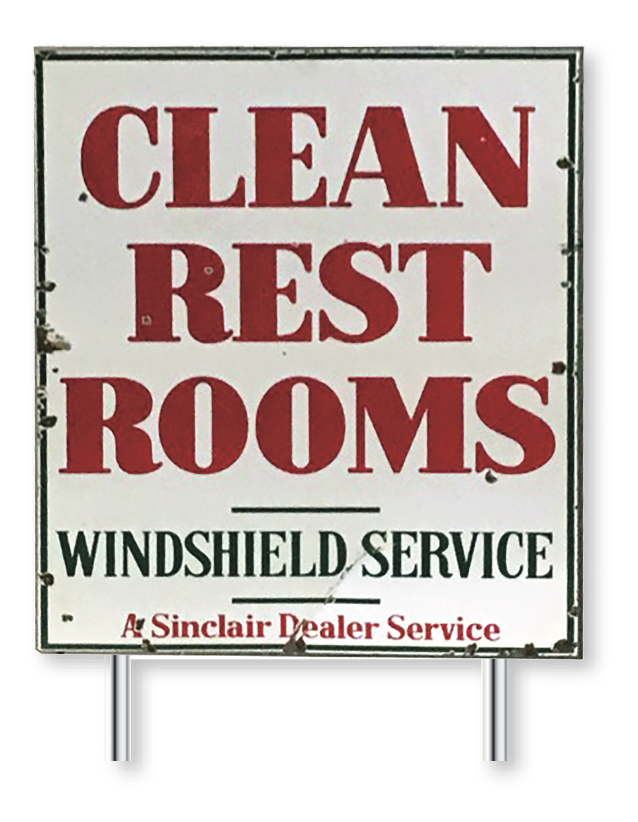
Dorri Partain
Managing Editor
A sign perhaps more welcoming than an actual “Welcome” Sign.
Early highway travelers had their work cut out for them when seeking any amenities we take for granted today. The first gas filling stations rarely had buildings, much less any type of facilities to offer customers.
The Gulf Refining Company was first in building attractive filling stations. In 1913, these new designs blended with residential properties — often looking like small cottages — but they did not offer more to customers than gasoline and motor oil.
Texaco realized the need to provide facilities for travelers and new stations built after 1918 included separate restrooms for ladies and gentlemen. While completely modern, restroom entrances were located along the exterior of the building — often with the men’s room and ladies’ room located on opposite sides.
As other oil companies followed suit to stay ahead of competition, Texaco began advertising “Registered Restrooms” in 1938 and hired a staff of “White Patrol” inspectors who traveled from town to town to ensure that all Texaco stations offered facilities that met the guidelines of sanitation promoted by their corporation.
Shell Oil advertised that their restrooms met the “White Cross of Cleanliness” and Phillips 66 had a staff of female inspectors dressed as nurses to ensure the same.
For decades, these restrooms would be available to anyone during regular filling station hours, but by the late 1960’s, most required that users would have to enter the station office and request a key because traveler restrooms were “Locked For Your Protection”.
While Sinclair Oil Co. apparently did not advertise a White Patrol or White Cross of Cleanliness, this sign would have advertised the availability of clean restrooms at the station’s entrance — along with Windshield Service — ensuring travelers had a clean windshield, oil levels were correct and a full tank of gas until the next stop miles down the road.



















